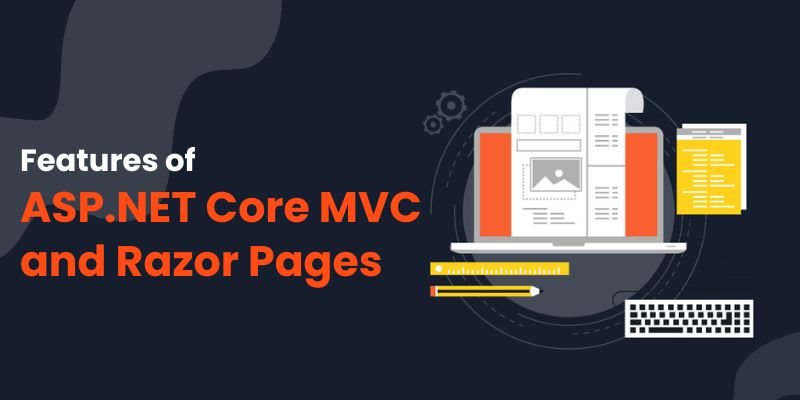ASP.NET Core is a powerful and flexible framework for building web applications, offering developers a choice between MVC (Model-View-Controller) and Razor Pages for structuring their projects. Both MVC and Razor Pages have distinct features and advantages that cater to different development scenarios. In this blog post, we’ll explore some of the top features of ASP.NET Core MVC and Razor Pages, highlighting their strengths and when to use each approach. Are you looking to advance your career in Dot Net? Get started today with the Dot Net Training in Chennai from FITA Academy!
ASP.NET Core MVC: Model-View-Controller
- Separation of Concerns: MVC architecture separates the application into three main components: Model, View, and Controller. This separation allows developers to maintain clean and organized code, making it easier to manage and scale the application over time.
- Flexible Routing: MVC provides flexible routing mechanisms, allowing developers to define custom routes for different actions and controllers. This enables clean and SEO-friendly URLs, improving the overall user experience and search engine optimization of the application.
- Full Control over HTML Markup: With MVC, developers have full control over the HTML markup of their views. This gives them the flexibility to design responsive and visually appealing user interfaces, tailored to the specific needs of the application.
- Reusable Components: MVC encourages the creation of reusable components, such as partial views and view components, which can be shared across multiple views. This promotes code reusability and simplifies maintenance, leading to faster development cycles and reduced code duplication. Learn all the Dot Net Development and Become a Dot Net Developer. Enroll in our Dot Net Online Course.
Razor Pages: Simplified Development Model
- Convention over Configuration: Razor Pages follow a convention-based approach to development, reducing the need for explicit configuration and boilerplate code. This simplifies the development process, especially for small to medium-sized applications, by providing sensible defaults and conventions out of the box.
- Single-Page Applications (SPA) Support: Razor Pages are well-suited for building single-page applications, where the entire UI can be contained within a single Razor Page. This simplifies navigation and improves performance by reducing the number of HTTP requests required to render the application.
- Built-in Support for CRUD Operations: Razor Pages provide built-in support for common CRUD (Create, Read, Update, Delete) operations, making it easy to scaffold data-driven applications with minimal effort. This accelerates development and reduces the amount of boilerplate code required to implement basic functionality.
- Integrated Page Model: Unlike MVC, where controllers and views are separate entities, Razor Pages combine both the UI markup and the corresponding code-behind logic into a single file. This integrated approach streamlines development by reducing the cognitive overhead of managing separate files for each page.
ASP.NET Core offers developers the flexibility to choose between MVC and Razor Pages based on the requirements of their projects. MVC provides a robust architecture for building complex web applications with fine-grained control over the application’s structure and behavior. On the other hand, Razor Pages offer a simplified development model, ideal for rapid prototyping and building smaller-scale applications with minimal ceremony. Looking for a career as a Dot Net Developer? Enroll in this professional Best Training Institute In Chennai and learn from experts about .NET Framework, Programming in C# and Implementing OOPS with C#.
Read more: Dot Net Interview Questions and Answers


